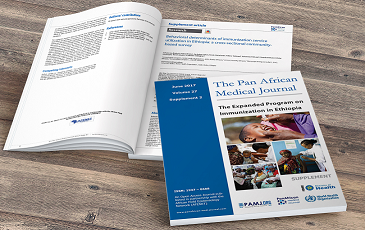Graves' acropachy in an euthyroid patient
Gabriel Canhete Machado, Letícia Schwerz Weinert
Corresponding author: Gabriel Canhete Machado, Department of Internal Medicine, University Hospital Of Pelotas, Federal University Of Pelotas, Pelotas, Brazil 
Received: 17 Oct 2024 - Accepted: 29 Oct 2024 - Published: 17 Jun 2025
Domain: Endocrinology
Keywords: Graves' disease, Graves' acropachy, euthyroid patient
Funding: This work received no specific grant from any funding agency in the public, commercial, or not-for-profit sectors.
©Gabriel Canhete Machado et al. PAMJ Clinical Medicine (ISSN: 2707-2797). This is an Open Access article distributed under the terms of the Creative Commons Attribution International 4.0 License (https://creativecommons.org/licenses/by/4.0/), which permits unrestricted use, distribution, and reproduction in any medium, provided the original work is properly cited.
Cite this article: Gabriel Canhete Machado et al. Graves' acropachy in an euthyroid patient. PAMJ Clinical Medicine. 2025;18:4. [doi: 10.11604/pamj-cm.2025.18.4.45649]
Available online at: https://www.clinical-medicine.panafrican-med-journal.com//content/article/18/4/full
Graves' acropachy in an euthyroid patient
Gabriel Canhete Machado1,&, Letícia Schwerz Weinert1
&Corresponding author
A 49-year-old Brazilian woman with a six-year diagnosis of Graves' disease (GD) for positive thyrotropin receptor antibody (TRAb) and a 37-pack-year smoking history was hospitalized for cardiovascular investigation after palpitations. During evaluation, she reported at least five years of untreated GD, describing swelling hands and intermittent pain in her finger joints for eight months. Physical exam revealed thickened skin, decreased sensitivity, and slight swelling of fingers, particularly in the upper extremity digits (A). No clubbing, erythema, or pain were noted. Radiographs showed finger swelling and fluffy asymmetric periosteal bone reaction on the second and third metacarpals of both hands (B and C, arrows), consistent with Graves' acropachy. This rare, extreme manifestation of GD has no specific treatment and typically occurs in moderate to severe cases. Unusually, the patient was euthyroid and had a negative TRAb, despite the lack of recent endocrine management. Graves' acropachy affects 8 in every 1,000 GD patients and is frequently linked to smoking. Differential diagnoses include myxedema and traumatic injury. Clinical and radiological evaluation, particularly swelling hands with X-rays showing new bone formation in the metacarpals, confirms the diagnosis. Although no cure exists, controlling GD may slow osteo-deposition progression.
Figure 1: A) swelling of fingers, particularly in the upper extremity digits; B, C) fluffy asymmetric periosteal bone reaction on the second and third metacarpals of both hands





